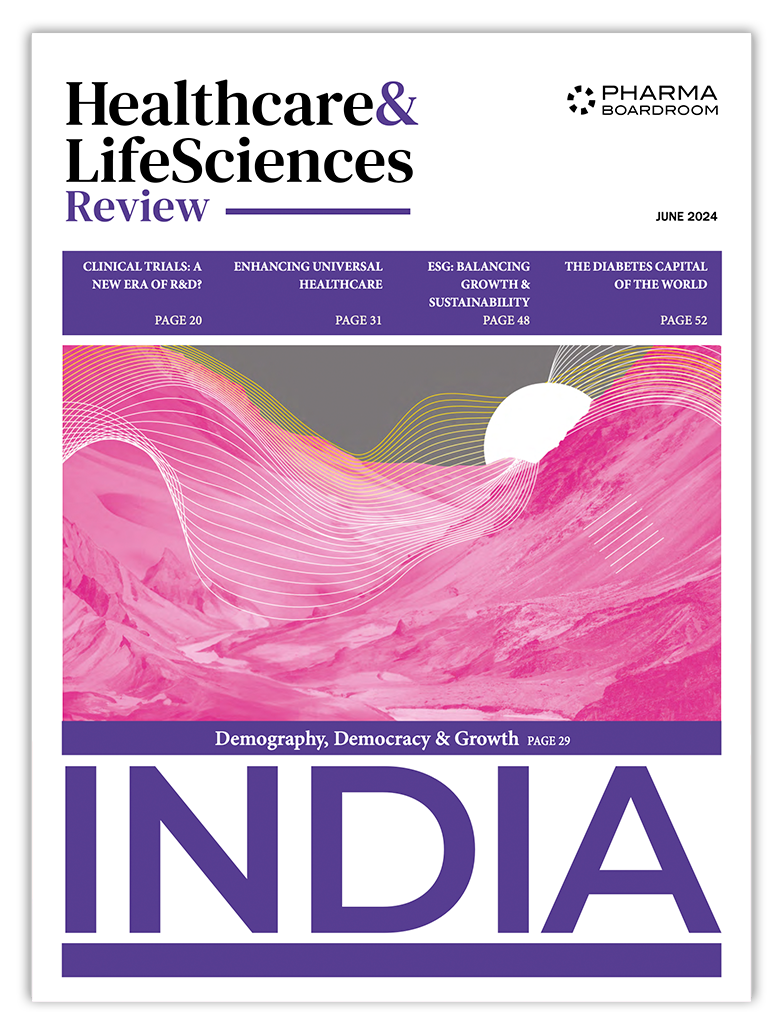Herwig Ostermann, executive director of the Austrian Public Health Institute (GOeG), a neutral entity that brings expertise and evidence together to help plan and promote Austrian healthcare, provides insights into the sorts of reforms that the country is going through to create a more sustainable, enduring and efficient system.
Could you introduce to our international readers the Austrian Public Health Institution (GOeG)?
In 1972, the first Ministry exclusively responsible for health affairs, and also at that time environmental protection, was established in Austria. Then, in 1973, the incumbent minster of health founded GOeG, at that time called the Austrian Federal Institute of Healthcare (OBIG), with a view of establishing a national institute for healthcare planning and public health. This entity was essentially organized as a public cooperation. In 2007, a political decision was undertaken to merge the newly established Federal Institute for Quality in Healthcare (BIQG) with the original 1973 founded OBIG, and the Austrian Health Promotion Fund (FGO), the branch responsible for health promotion and prevention, funded in 1997.
GOeG is owned by the Republic of Austria and we are funded via the Ministry of Health (MoH) and also conduct various projects on behalf of the regional health funds, the sickness funds and EC as well as further commissioning parties. The federal, provincial and local governments jointly cover the FGO budget. We support the various stakeholders according to the needs and act as a neutral applied science platform that brings expertise and evidence together.
Furthermore, we participate in a wide range of activities. These include national projects, consultancy work for the MoH and the nine Austrian regions, evaluation studies on behalf of the sickness funds, hosting the WHO collaboration center for pharmaceutical pricing and conducting research projects for the MoH and European Union. In summary, we act like an applied research institute, encompassing our original vision of unifying health and medicine by incorporating science and expert opinions.
What are the individual roles of each department, the FGO, OBIG and BIQG?
FGO was founded in 1998 due to the Health Promotion act, assigning 7.25 million EUR (8.5 million USD) to national health prevention and promotion. The role of this branch is to dedicate these funds to projects focusing on health promotion in settings (community and workplace health promotion), healthy ageing, mental health promotion, health literacy, reduction of health inequalities as far as promoting a healthier lifestyle. FGO also acts as national competence and networking center and offers capacity building services like conferences, training, distribution of methods and materials. Equally FGO connects with local health promotion communities to get a better picture of the needs of the entire community.
In 2013 a further 15 million EURO (17 million USD) for health promotion and prevention was dedicated to the nine regions of Austria until 2020, which has allowed FGO to transform itself to act in a more of a coordinative role and endorse more innovative projects.
OBIG conducts long and short-term health planning. In 1997, we assisted in Austria´s first legally binding health plan, and subsequently have helped in designing a hospital plan as well as from 2006 onwards the structural health plan. In 2013, we supported the MoH in taking up the new health reforms and were mandated to support the health reform partners in pursuing the various targets set by the reform. At present, we are in charge of monitoring health reform processes in various tasks, such as budget caps.
BIQG is responsible for ensuring a quality system in health care throughout Austria. OBIG and BIQG generally fall under the same organisational roof, being recognised as GOeG, rather than being individually credited for the branches work.
How would you compare the state of the Austrian healthcare system to the rest of Europe?
The view of experts, including myself, will always differ from the Austrian public as it is our task to highlight certain areas with potential for improvement. I believe that the system must continually develop and evolve over time to adapt to the ever-changing demographic structure of the general Austrian population.
[Featured_in]
I am convinced that the overall healthcare system is well established, though we have some concerns around integration of care that creates inefficiencies, but this is not unique to the Austrian market. The current two-tier finance mechanism makes it challenging to conduct reforms, though if the system runs as it was designed, it allows universal access of world class medical care to every Austrian.
What are the concerns with the current financing system?
The current two-tier financing system is a reality for many European nations. The real concern I foresee is what will happen when we are compelled to find a way to finance new therapeutic areas, especially when patients can be treated either in the outpatient or hospital settings. In this regard, the system is inflexible as both environments will be reluctant to allocate funds, so a form of integration at some levels must be attained. Another issue relates to hospital care being individually managed and financed within each specific region; however, in the case of highly sophisticated and expensive treatments coordination across the regions is necessary.
The major reforms we may need to see down the line is reallocating the responsibility for hospital care on the federal level, but this – unfortunately – requires a change in the Austrian constitution through government support, which currently is not forthcoming. Saying that, we have already begun overall integration at some levels with sophisticated hospital care and the promotion of primary healthcare, and hopefully this kick-starts change.
Overall healthcare costs around the world are rising, especially as the population ages. How do you ensure the Austrian healthcare budget rises in parallel with these increasing costs?
In the 2013 reforms, budget caps were planned for financing hospital care and the sickness funds at national and regional levels. These caps are renegotiated on a four-year basis – last conducted in 2016 – with the planned projections stating that from 2017 to 2021 the annual health expenditures should decline from 3.6 to 3.2 percent, in line with GDP projections that take into account forecasted inflation. Thus far, we have achieved this goal during the last couple of years. Setting targets is important to assess if we have succeeded in achieving clear healthcare reforms in the short and long term: five to ten years down the track.
GOeG has established a monitoring system to give us real-time analysis of the spending so we can forecast year on year and predict more accurately in the future. Furthermore, this gives policy makers an opportunity to make better short and long-term decisions. From our analysis, I believe we must push for structural reforms on a regional basis to achieve our goal of overall healthcare spending decreases.
For example, Austria has the highest number of hospital discharges in the EU, and as always, we have a high number of hospital beds and contracted physicians, all regionally controlled factors. On the one hand, this well-established infrastructure is the envy of many nations – on the other hand – we know that the hospital-based system is cost inefficient and we want to transform the overall healthcare system to focus more on primary healthcare.
What interaction does GOeG have with the pharmaceutical industry in drawing up budgets?
The budget caps are drawn up through negotiations amongst the public financing agents, which for the Austrian case encompass the sickness funds, regional governments, as well as the federal government represented by the MoH. As a matter of fact, stakeholders of healthcare such as the professional bodies or the pharmaceutical industry are not on board when making these negotiations. The pharmaceutical industry in general has a rather reserved attitude towards budget caps as hospitals procurers will spend less, in the end resulting in decreased pharmaceutical revenues. Despite not heavily involving the pharmaceutical industry, we are very transparent in displaying to them hospital spending and publishing how the budget cap function.
[related_story]
A major concern of the pharmaceutical industry but also of the public payers is whether or not the current system is able to encourage the launch of innovative products that address unmet needs. When devising the budget cap, this concern was taken into account, and technological progress was incorporated in the original model. Currently, Austrian policy-makers are willing to financially reward innovation in health care. However, highly expensive therapies, as observed in recent years, pose challenges to the fiscal sustainability of the whole system.
To counter these challenges in 2016 an agreement in Austria was concluded between the reimbursement authorities, and pharmaceutical industry that pharmaceutical companies would pay a clawback of 125 million EUR (146 million USD). Overall, it is a system that promotes innovation.
Do you believe the Austrian healthcare system is an attractive destination for pharmaceutical companies?
Circumstances change very quickly in this sector, and I would say if you spoke with the commercial industry they would note there have been a lack of improvements, but this is not unique to Austria as in all markets they highlight the same concerns. Austria is highly attractive in the early launch of products, generally one of the first or second wave nations, and equally we are one of the first countries to have products placed upon the reimbursement list.
How does the Austrian healthcare system adapt to changing future healthcare trends?
Firstly, rather than reactively adapt to future diseases, we should prioritize tackling the vast inequalities that construct today´s society. These societal differences are the gap between good or poor health and we should be worrying not about the majority of the population, but the 15 percent of worst off patients that we currently do not service in an adequate manner. The entire system is quite complex and so we are at present focusing on educating patients to ensure they are health literate and can take full advantage of Austria´s excellent healthcare
Secondly, I foresee the entire system taking a more integrated approach, where we service the patients from prevention all the way until rehabilitation and condition management. Pharmaceutical companies are already taking this approach on board and have integrated technology now with specially designed smartphone applications for patients suffering from chronic disease such as diabetes. This digital e-health aspect has the potential of revolutionizing future healthcare and giving patients a more holistic experience. In summary, these steps will give us comparative research allowing us to better decide which medicines should be reimbursed based on cost and efficacy.
Lastly, a recent report down by the Organization for Economic Co-operation and Development (OECD) has highlighted the glaring inefficiencies we must overcome to sustain spending under the budget caps. For example, knee and hip replacement in Austria are well above the OECD European average, great for manufactures of the treatment, but maybe not for the system. We must look at numbers like these to understand how we can streamline processes to fund efficient treatments.
What is your final message?
GOeG will continue to provide a neutral voice within the Austrian healthcare networks. We encourage further discussions between all parties to incite developments and improvements so we can ensure Austria in the future has an efficient healthcare system, based around the overriding goal of better treating Austrian patients.







